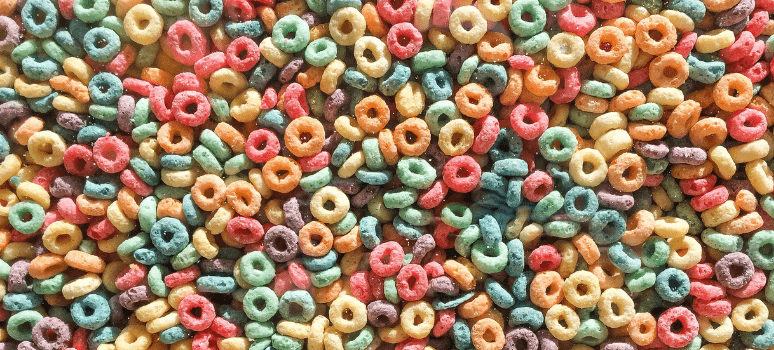
Food additives are in controversy with the rise of natural food. Whether we are advocates or detractors, the fact is that they are present in our everyday shopping.
Salt was first used as a preservative in China some 4,000 years ago. At least that is the first time we have documented it, and since then, the importance of this additive has been translated into trade routes, engineering works or the development of sophisticated extraction methods. Thanks to the use of salt, theood could be preserved and transported without losing its safety.
The safety of food for human consumption was the first objective of the use of additives, but the development of the additives in the food industry has been a key factor in the development of food additives.he food industry and consumer demands have led the sector to use additives to make food more attractive.
As defined by the World Health Organization, tood additives are substances added to food to maintain or improve its safety, freshness, taste, texture and appearance. We could say that salt or sugar are the most primitive additives we know of and the most used, and that is because the list of additives in use today is longYou can find this out in the European regulation, it is possible that no one has had the patience to count them so far.
What we do know is that the use of additives is a highly regulated sector and only those that are considered safe are authorised. according to maximum doses of use established by a commission, the Codex Alimentarius, and evaluated by a committee of experts made up of technicians from the FAO and the WHO. In addition to this authorisation, there are more specific European Union regulations for each additive:
- The name or reference of the additive
- Foods to which additives cannot be added and to which additives can be added
- Conditions of use of additives
- Additives that cannot be sold directly to consumers
Although the WHO divides additives into flavourings, enzyme preparations and "other additives", a classification based on their functions or properties helps us to better understand the food we eat. The European Union describes 27 functional classes of additives. In general, they are divided between those who:
- Improve texture of the food, its consistency and appearance: emulsifiers, stabilisers or anti-caking agents
- Improve or preserve their nutritional valuevitamins and minerals
- Retains the health of food: antioxidants and preservatives
- They control the acid/base balance o aid fermentation
- They change the colour and taste in the food: curcumin, chlorophylls, quinoline yellow, carotenes, sorbitols or saccharins, among others.
How to recognise additives?
As consumers, we have a responsibility to know what we are buying. However, no matter how hard we try to read labels, it is not easy to know what is behind them. The basic identification of all additives is the letter E followed by a hyphen and a three- or four-digit number. Of these figures, the first one indicates the type of additive whether it is a colouring agent (identified by number 1) or a preservative (identified by number 2), for example.
In general, thickeners or stabilisers and gelling agents are additives of natural origin, but there are also synthetic additives such as benzoic acid and sorbic acid, and their functions are mainly preserving.
On the other hand, there are foods that should never contain additives. These are the so-called "unprocessed foods" and are those that have not undergone a process of substantial modification. E.g. cleaning, crushing, mincing, boning, deep-freezing and freezing, splitting or grinding. In addition, the following foods are free of additives:
- Honey
- Oils and fats of animal or vegetable origin, not emulsified
- Butter and buttermilk
- Unflavoured pasteurised milk and cream and unflavoured fermented milk products
- Mineral water and all bottled or packaged waters
- Coffee, coffee extract and unflavoured leaf tea
- Dry pasta
- Sugar
On the other hand, there is aThe following are not permitted in foodstuffs in which a colouring additive is not permitted. In addition to those mentioned above, there are cured and fresh cheeses, eggs, flour, pasta, vegetables and pulses, fish and jams, among others.
If we want to assess at the time of purchase the product that we take home, we have mobile applications that we can download for free. Some, such as Yuka, use a simple "traffic light" system based on composition, energy value, sugars or the presence of additives under suspicion. Other apps, such as My Real Food, analyse the list of ingredients and nutritional information and suggest a lifestyle. In general, such apps are based on the concept of "real food" which rejects any processed and additive-laden food.
At Biosalud Day Hospital is an advocate of natural food, not only as a lifestyle, but also as part of personalised treatments. Sometimes the diet accompanying a treatment is very strict and always eliminates sugar and processed foods from the food, while incorporating organic foods that have received minimal amounts of insecticides or repellents.
Why is there controversy around food additives?
The origin of our distrust of additives is said to lie in the Villejuif list, a list of additives that were advertised as dangerous without any evidence, as the list had been compiled by a worker of a local French soft drink company to tarnish the brand's image.
What is certain is that the list of permitted additives is evolving as the long-term effect of these substances on the organism is being studied. There is not even a consensus between countries on the safety of some of these additives. This is the case, for example, with antioxidants.

